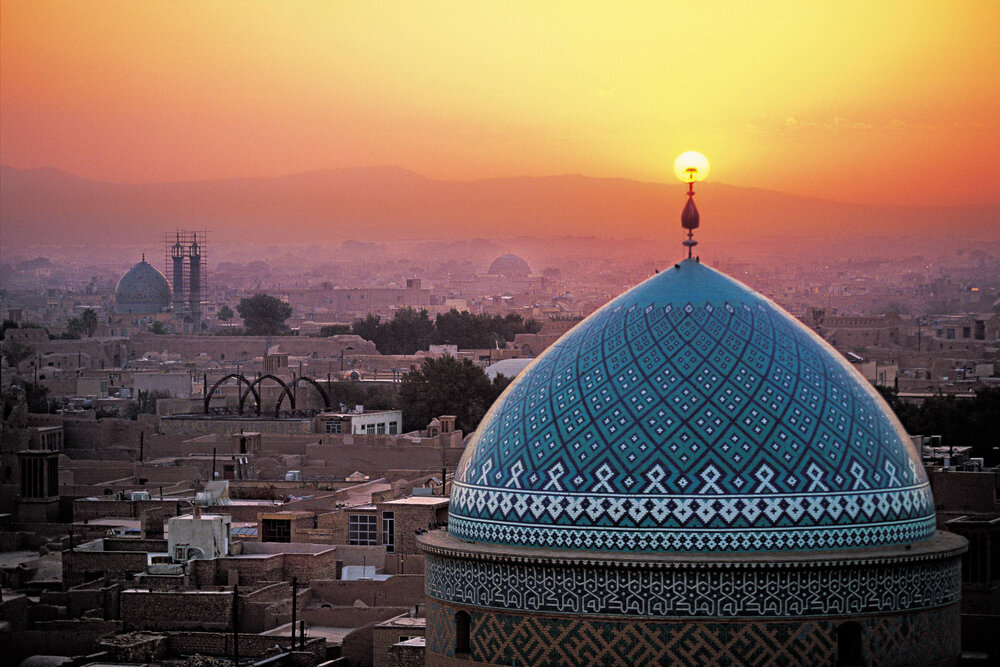Coronavirus cuts tourists visiting Yazd by 99%

TEHRAN – Just 20,000 domestic tourists and 66 foreign tourists visited the historical province of Yazd during the first three months of the current Iranian calendar year (started March 20), equaling just one percent of the figure for the last year due to the global coronavirus pandemic.
In recent years, the cultural heritage authorities of Yazd and its hospitable people have made a special effort to demonstrate the city’s potential in the field of tourism especially cultural tourism.
With its winding lanes, a forest of badgirs (wind catchers), mud-brick houses, atmospheric alleyways, and centuries of history, the oasis city is a living testimony to the intelligent use of limited available resources in the desert for survival.
A couple of weeks before the virus spread, Iran was emerging as the third fastest-growing tourism destination in the globe in 2019, with 27.9 percent growth year on year, according to the United Nations World Tourism Organization (UNWTO).
Coronavirus outbreak has squandered all efforts made to promote the tourism capacity of the province, IRNA quoted the provincial tourism chief Seyyed Mostafa Fatemi as saying on Wednesday.
People active in Tourism and handicrafts sectors have taken a severe hit from coronavirus pandemic and their activities are closing down one by one, he added.
While Yazd was the first province where hoteliers voluntarily closed their hotels to protect public health, now, they are operating at only 10 percent of their capacity, he said.
To improve the tourism industry in the region, cultural heritage authorities of Yazd try to boost tourism infrastructures such as the implementation of development projects including the construction of hotels, guesthouses, and various accommodation centers in the heart of the desert, which leads to generating job opportunities for the locals.
However, according to the official, the province is at the risk of losing part of its tourism infrastructure, and its reconstruction will be time-consuming and costly.
He also noted that the government loans for coronavirus compensation haven’t been paid to the crafters of the province.
Back in April, the government announced it will support those which are grappling with fiscal problems by offering loans with a 12-percent interest rate. The Ministry of Cultural Heritage, Tourism and Handicrafts also suggested a rescue package for tourism businesses.
The government has also allocated a 750-trillion-rial (about $18 billion) package to help low-income households and small- and medium-sized enterprises suffered by the coronavirus concerns.
In July 2017, the historical structure of the city of Yazd was named a UNESCO World Heritage. Wedged between the northern Dasht-e Kavir and the southern Dasht-e Lut on a flat plain, the oasis city enjoys a very harmonious public-religious architecture that dates from different eras.
Yazd is usually referred to as a delightful place to stay, or a “don't miss” destination by almost all of its visitors.
Water is brought to the city by the qanat system. Each district of the city is built on a qanat and has a communal center.
The use of earth in buildings includes walls and roofs by the construction of vaults and domes. Houses are built with courtyards below ground level, serving underground areas. Wind-catchers, courtyards, and thick earthen walls create a pleasant microclimate.
Partially covered alleyways together with streets, public squares and courtyards contribute to a pleasant urban quality. The city escaped the modernization trends that destroyed many traditional earthen cities.
It survives today with its traditional districts, the qanat system, traditional houses, bazaars, hammams, water cisterns, mosques, synagogues, Zoroastrian temples, and the historic garden of Dolat-Abad. The city enjoys the peaceful coexistence of three religions: Islam, Judaism, and Zoroastrianism.
ABU/MG
